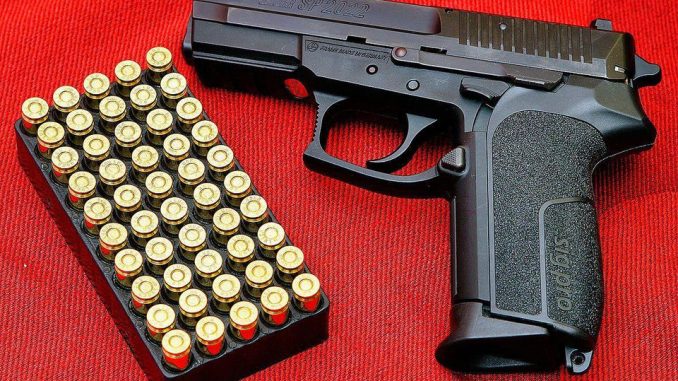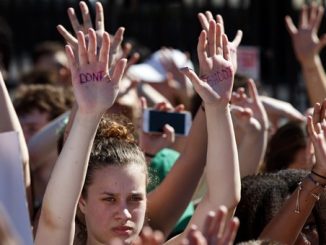
After the Parkland, Florida shootings, some are calling for more government research into “gun violence.”
Currently, the federal government’s Centers For Disease Control and Prevention (CDC) is restricted by Congress from using tax money to promote gun control (although not from conducting research into gun-related violence). Some legislators want to remove this funding restriction. Separate from the federal government, the state of California has created a “gun violence research center” and the state of New Jersey is considering establishing a similar program. Similarly, university professors such as David Hemenway of the Harvard Injury Control Research Center, have called for more federal funding of gun violence research.
Widget not in any sidebars
Many gun rights advocates are wary of such research, fearing it will be used to fuel a partisan political agenda. Dr. Timothy Wheeler of Doctors for Responsible Gun Ownership has noted that CDC has a track record of anti-gun bias. In the 1990s, one CDC official even stated that his goal was to create a public perception of gun ownership as something “dirty, deadly — and banned.”
But regardless of whether “gun violence” research is being conducted by the federal government, states, universities, or private organizations, there are three key principles all public health researchers and firearms policy analysts should remember.
The first principle is:
* Firearms save lives as well take lives.
If one imagines that guns in civilian hands are used solely as murder weapons, it makes sense to ban or strictly regulate them.
But millions of Americans legally carry a firearm every day, and most cite self-defense as their primary reason. The overwhelming majority of the time, those guns are never drawn in anger. But innocent civilians can and do sometimes use their guns in self-defense. Any discussion of firearms policy must acknowledge the lives saved by legal use of guns as well as the lives lost by criminal use.
The numbers of defensive gun uses (DGUs) each year is controversial. But one study ordered by the CDC and conducted by The National Academies’ Institute of Medicine and National Research Council reported that, “Defensive use of guns by crime victims is a common occurrence”:
Almost all national survey estimates indicate that defensive gun uses by victims are at least as common as offensive uses by criminals, with estimates of annual uses ranging from about 500,000 to more than 3 million, in the context of about 300,000 violent crimes involving firearms in 2008.
Another study estimates there are 1,029,615 DGUs per year “for self-protection or for the protection of property at home, work, or elsewhere” excluding “military service, police work, or work as a security guard,” (within the range of the National Academies’ paper), yielding an estimate of 162,000 cases per year where someone “almost certainly would have been killed” if they “had not used a gun for protection.”
(In comparison, there were 11,208 homicide deaths by firearm in the US in 2012. There were a total of 33,636 deaths due to “injury by firearms,” of which the majority were suicides, 21,175.)
A second key principle in judging gun violence research:
* The value of firearms in the hands of law-abiding citizens should be measured in terms of lives saved or crimes prevented, not criminals killed.
Widget not in any sidebars
As an example of the latter type of analysis, one recent Washington Post story reported that, “For every criminal killed in self-defense, 34 innocent people die”:
In 2012, there were 8,855 criminal gun homicides in the FBI’s homicide database, but only 258 gun killings by private citizens that were deemed justifiable, which the FBI defines as “the killing of a felon, during the commission of a felony, by a private citizen.” That works out to one justifiable gun death for every 34 unjustifiable gun deaths.
However, this comparison can be misleading. An armed civilian does not have to kill the criminal in order to save an innocent life. As the National Research Council notes, “[E]ffective defensive gun use need not ever lead the perpetrator to be wounded or killed. Rather, to assess the benefits of self-defense, one needs to measure crime and injury averted. The particular outcome of an offender is of little relevance.”
We don’t judge whether the police are doing a good job by the numbers of criminals they kill each year, but rather by how well they stop crime. The same should be true in judging the effectiveness of civilian DGUs.
The exact number of DGUs is not precisely known. There are reasons to think the actual number may be higher or lower than the figures cited. For example, some respondents to surveys may consciously or unconsciously exaggerate the degree of peril they were in, which could lead to an overestimate of DGUs.
On the other hand, gun policy researcher Brian Doherty explains how reported numbers could also be an underestimate. Just as many sexual assault victims don’t report those crimes to the authorities, many law-abiding people who successfully use a gun to deter a crime without firing a shot may similarly choose to avoid reporting these incidents to the police:
[Y]our possession or use of the weapon might be a matter of greater concern to the cops than whatever the intruder or criminal you were repelling was up to. They’ll doubtless never lay hands on him; you are right there, for any investigation and harassment the cops might want to call forth. Many gun owners or gun users might see little good and much possible bad arising from calling the cops after a DGU incident, and thus many or even most would never make a police blotter, never make a newspaper.
It’s relatively easy to measure the number of lives lost due to criminal gun violence. It’s harder to measure the number of lives saved by legal defensive gun use. Murders that didn’t happen don’t show up on crime statistics. This is just another example of Bastiat’s classic principle of “the seen vs. the unseen.”
Finally, a third principle to remember in analyzing public health gun violence research:
* The right to self-defense does not depend on statistics and numbers.
Doherty makes an important point about the ultimate relevance of any such research studies: “However large the number of DGUs, or how small; and however large the number of accidents or tragedies caused by guns, or how small, the right and ability to choose for yourself how to defend yourself and your family — at home or away from it — remains, and that numerical debate should have no particular bearing on it.”
One of my friends had to use his legal concealed handgun to protect himself when attacked by two knife-wielding criminals. I’ve written about his story here.
For those who wonder whether AR-15-style rifles have a legitimate self-defense use, took a look at this story where someone used an AR-15 to protect himself during a home invasion against 3 black-clad intruders, and another story where a man used his AR-15 to stop a knife attack against others.
It is our inalienable right to self-defense that makes me a proud supporter of responsible gun ownership and of the Second Amendment. Guns can be used for good as well as evil purposes.
We would consider it irresponsible for a public health researcher to study only the negative effects of, say, caffeine consumption without also considering the positive effects. If public health researchers wish to have credibility with the millions of gun rights supporters such as myself, they should endeavor to quantify the very real benefits of legal gun ownership in addition to the genuine harms caused by illegal gun use. Studies that discuss only the latter without the former are incomplete at best — and dishonest at worst.
I support good public policy based on objective research, informed by a proper understanding of individual rights — including the right to self-defense. If we’re going to engage in gun violence research, let’s do it right — by recognizing both the positive and negative aspects of civilian firearm ownership.







Be the first to comment